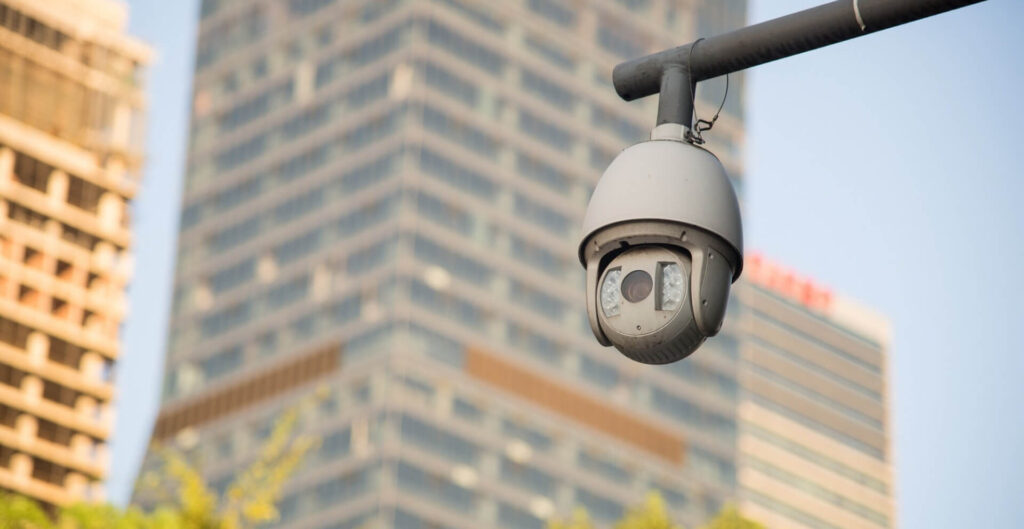
The journey of Closed-Circuit Television (CCTV) cameras from simple analog systems to advanced AI-powered surveillance has been remarkable. This transformation shows how technology can improve security, efficiency, and data use.
The Analog Era: The Start of CCTV
CCTV technology first appeared in the late 1940s. The earliest systems were analog, meaning they had basic features and limited abilities. These analog cameras captured video using old-style monitors and video cassette recorders (VCRs). The video quality was quite poor compared to today’s standards, with low resolution and fewer frames per second. Despite these limitations, analog CCTV was a groundbreaking way to monitor and record activities, mostly used in banks, retail stores, and other high-security places.
One of the main problems with analog systems was storing and finding footage. VCR tapes were large and could only record for a limited time, requiring frequent changes and manual handling. Finding specific events within the footage was time-consuming, as it involved manually rewinding and fast-forwarding tapes.
The Digital Revolution: Better Features
The 1990s marked the beginning of the digital revolution in CCTV technology. Digital systems offered significant improvements over their analog predecessors. Digital Video Recorders (DVRs) replaced VCRs, allowing for higher quality recordings, greater storage capacity, and easier retrieval of footage. Digital cameras provided better resolution, clearer images, and the ability to compress video files, making storage more efficient.
One of the key benefits of digital CCTV systems was the ability to integrate with other digital security measures. This integration enabled features such as remote monitoring, where security personnel could view live feeds from cameras on their computers or mobile devices. Additionally, digital systems could use network connections to store footage on servers, making it easier to manage and access recordings from multiple locations.
The Networked Age: IP Cameras and Connectivity
The introduction of Internet Protocol (IP) cameras further changed CCTV systems. Unlike analog cameras that relied on dedicated cables, IP cameras used the internet and computer networks to send data. This brought several advantages, including higher resolution, greater flexibility in camera placement, and advanced features like Power over Ethernet (PoE), which allowed both power and data to be sent through a single cable.
IP cameras also made it easier to connect CCTV systems with other networked devices, creating more comprehensive security solutions. They enabled advanced features such as motion detection, event-triggered recording, and remote configuration. These capabilities allowed security systems to become more proactive, as cameras could now alert personnel to potential threats in real-time.
The AI-Powered Era: Smart Surveillance
The latest phase in the evolution of CCTV technology is the use of Artificial Intelligence (AI) and machine learning. AI-powered surveillance systems have transformed CCTV from a passive recording tool into an active security solution capable of real-time analysis and decision-making.
AI algorithms can analyze video footage to detect patterns, recognize faces, and identify suspicious activities. These systems can tell the difference between normal and abnormal behavior, reducing the number of false alarms and ensuring that security personnel are alerted to real threats. For example, AI can tell if a person is loitering suspiciously or if a group of friends is just chatting, enabling more accurate threat assessments.
Facial recognition technology, powered by AI, has become a significant part of modern surveillance systems. It allows for the identification and tracking of individuals across multiple cameras and locations, providing valuable data for security and law enforcement agencies. Additionally, AI can enhance video analytics by identifying license plates, counting people, and even detecting unattended objects.
The Future: Better Integration and Privacy Concerns
As AI continues to advance, the future of CCTV technology will likely see even greater integration with other smart technologies. This could include seamless connectivity with smart home systems, better predictive analytics to anticipate security threats, and improved compatibility with other Internet of Things (IoT) devices.
However, the rise of AI-powered surveillance also raises important ethical and privacy concerns. The ability to continuously monitor and analyze people’s behavior can lead to potential misuse and invasion of privacy. Ensuring that these technologies are used responsibly, with appropriate regulations and safeguards in place, will be crucial in balancing security needs with individual rights.
Conclusion
The evolution of CCTV cameras from analog systems to AI-powered surveillance reflects the broader path of technological advancement. Each phase of this evolution has brought significant improvements in terms of functionality, efficiency, and security. As we move forward, the challenge will be to harness the power of these advanced technologies while addressing the ethical implications and ensuring that privacy rights are protected. The future of CCTV, powered by AI, promises to offer even more sophisticated security solutions, reshaping the landscape of surveillance in ways we are only beginning to understand.

